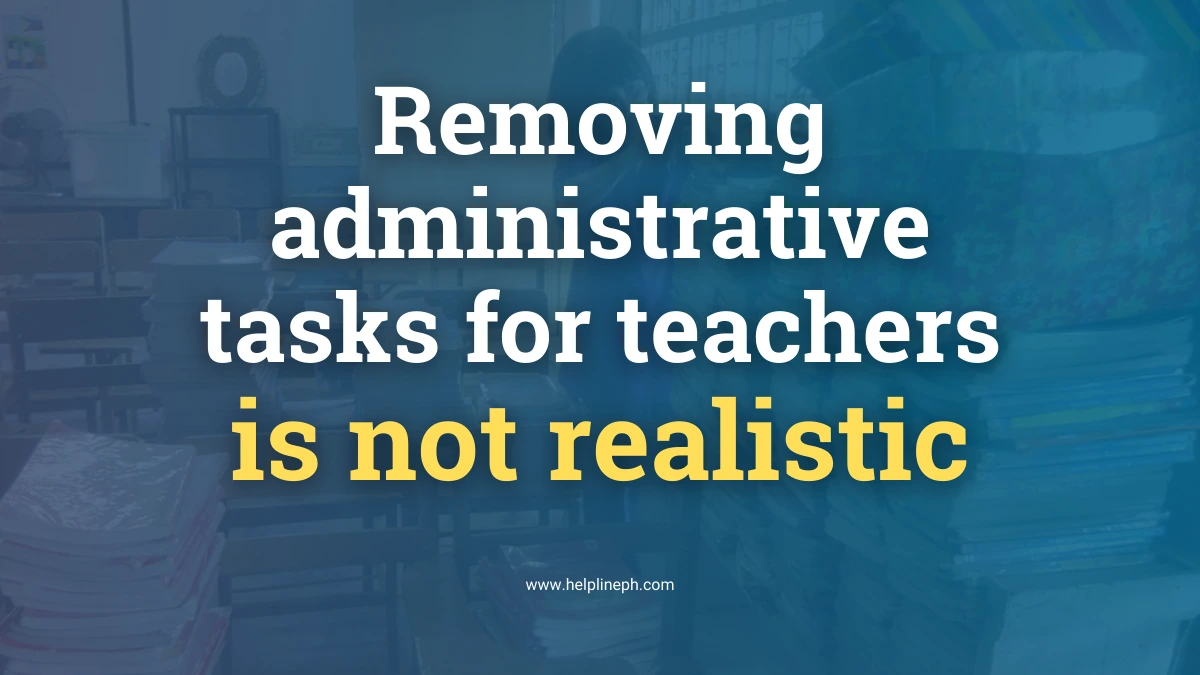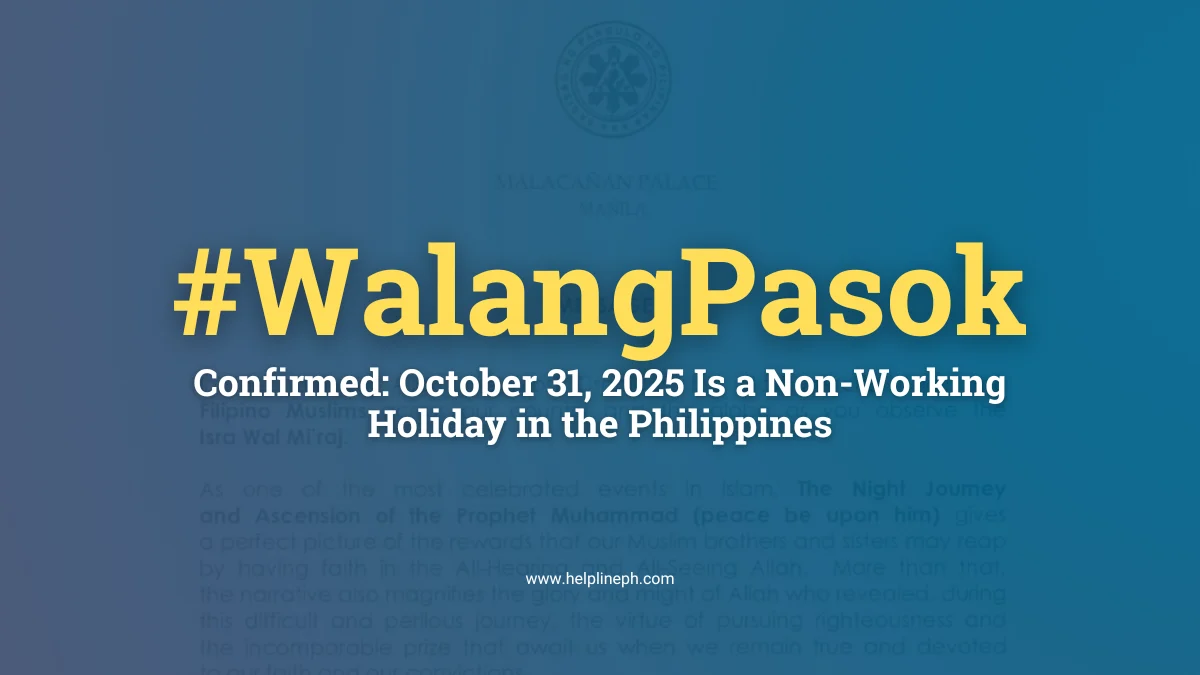The Department of Education (DepEd) recently introduced a rule aimed at helping teachers focus more on their primary role—teaching. This rule, known as DepEd Order No. 002, Series of 2024, is meant to reduce or even remove many of the administrative tasks teachers have to do in addition to their teaching duties. The idea behind this is simple: if teachers are freed from these non-teaching tasks, they can put all their energy into educating their students.
However, while this policy seems like a great solution to the burden many teachers face, making it work may not be as easy as it sounds. In fact, many school principals and education experts believe it might not even be realistic. Let’s explore why.
Why Teachers Are Overloaded with Administrative Tasks
In schools, teachers often find themselves overwhelmed with various tasks that go beyond their teaching responsibilities. These can include filling out reports, organizing events, maintaining classroom records, or handling the school’s paperwork. These tasks, while important for the school’s smooth operation, take up a lot of time and energy.
Teachers often end up working extra hours, sometimes even sacrificing weekends, just to keep up with the workload. This makes it difficult for them to focus on lesson planning, student engagement, or improving their teaching methods. Many teachers argue that they became educators to teach—not to be buried in paperwork. So, when DepEd introduced the idea of removing these tasks, it was met with excitement. But here’s the catch: Who will handle these tasks if teachers are freed from them?
DepEd Order No. 002: What Does It Aim to Do?
DepEd Order No. 002, Series of 2024, is meant to “immediately remove administrative tasks from public school teachers.” The goal is simple—let teachers do what they’re trained to do: teach. The Department of Education has recognized that teachers in public schools are often stretched too thin and are forced to spend a lot of time on tasks that don’t directly involve teaching.
DepEd believes that by taking away these tasks, teachers will be able to improve the quality of education they provide. They can dedicate more time to lesson preparation, helping students with difficulties, and coming up with creative ways to make learning more fun and engaging.
Why Some Are Skeptical
While the intention behind DepEd Order No. 002 is good, many school principals and administrators are worried about how this will work in practice. Schools still need to function smoothly, and someone still needs to do the paperwork, maintain records, and manage non-teaching tasks. If teachers stop doing these tasks, who will take over?
This is where the problem lies. Public schools often don’t have enough staff to handle these administrative duties. Principals and heads of schools are concerned that removing these tasks from teachers without providing enough support staff will create chaos. If there are no plans to hire additional administrative personnel, the burden may shift to the school heads, who already have their own set of responsibilities.
Challenges in Implementing DepEd Order No. 002
One of the biggest challenges is finding the people who will take over the non-teaching tasks. In theory, administrative personnel could handle them, but many public schools in the Philippines are already underfunded. They don’t have enough budget to hire additional staff, and in many cases, they don’t even have enough classroom teachers. So how can schools find the resources to employ more administrative staff to carry out these tasks?
Here are some of the specific challenges:
- Lack of Funding: Schools may not have the budget to hire enough non-teaching staff to take over the administrative duties. Without the right people to do these tasks, they will likely fall back on the teachers or principals.
- Staff Shortages: Public schools are often understaffed, with teachers already handling more students than they should. Hiring more administrative staff to take on these duties is not something every school can easily do.
- Transition Period: Even if new staff members are hired, there will likely be a transition period where teachers still have to help out with administrative tasks. During this period, they might still be overburdened.
- Unclear Guidelines: The implementation of DepEd Order No. 002 is still unclear. While the goal is to remove non-teaching tasks from teachers, there are no clear guidelines on how schools should manage these tasks in the future.
Why Removing Administrative Tasks Completely May Not Be Realistic
The idea of freeing teachers from all administrative duties sounds great on paper, but in reality, schools are complex organizations that need a lot of administrative work to function smoothly. While it’s possible to reduce some of the paperwork or other duties teachers handle, it’s unlikely that all of it can be completely removed.
In many cases, teachers will still need to maintain classroom records, communicate with parents, or organize school events. Even with administrative staff in place, teachers are often the ones who have the most contact with students and parents. This makes it hard to remove them entirely from some of these responsibilities.
Another problem is the availability of staff. Hiring enough administrative personnel to take over all these tasks may not be possible for most schools, especially those in rural or underfunded areas. While wealthier schools may be able to afford additional staff, many public schools will struggle to meet this requirement.
A More Realistic Approach
Instead of aiming to remove all administrative tasks from teachers, a more realistic approach would be to reduce the workload and make it more manageable. This could involve streamlining some processes or using technology to make administrative tasks easier.
For example:
- Using technology for paperwork: Schools could implement software that automates report submissions, attendance records, or grading. This would significantly reduce the amount of time teachers spend on paperwork.
- Hiring part-time staff: Instead of hiring full-time administrative personnel, schools could consider part-time or temporary staff to help with peak periods of administrative work, such as during enrollment or exams.
- Sharing the workload: Teachers could also share administrative tasks with each other, ensuring that no one person is overwhelmed.
Conclusion: Striking the Balance
DepEd’s effort to reduce teachers’ administrative burden is commendable, and the policy is well-intentioned. However, making it work will require careful planning and enough resources to hire the right people to handle these tasks. Schools cannot function without a certain level of administrative work, and someone must do it.
While removing these tasks entirely may not be realistic, reducing the burden is possible. By adopting new technology and finding creative ways to share the workload, teachers can focus more on what matters most—teaching the students.
Frequently Asked Questions (FAQs)
What is DepEd Order No. 002, Series of 2024?
This order aims to remove non-teaching administrative tasks from public school teachers, allowing them to focus more on teaching.
Why is removing administrative tasks for teachers important?
Many teachers are overburdened with paperwork and other tasks that take away time from their main responsibility, which is teaching.
Who will take over the administrative tasks if teachers are freed from them?
This is one of the biggest challenges. Without enough budget to hire additional administrative staff, the burden may fall on school principals or other personnel.
Is it realistic to remove all administrative tasks from teachers?
Completely removing all administrative tasks may not be realistic. A better solution may be reducing the workload through technology and shared responsibilities.
What can schools do to reduce the administrative burden on teachers?
Schools can use technology, hire part-time staff, and share the workload among teachers to make administrative tasks more manageable.






